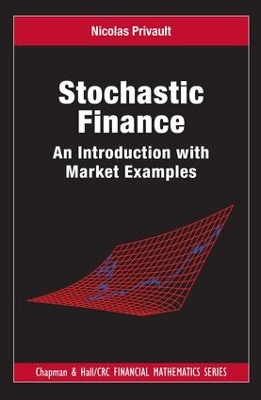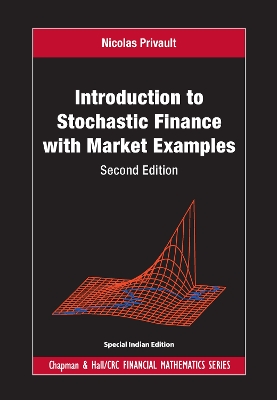Chapman and Hall/CRC Financial Mathematics
2 total works
Stochastic Finance: An Introduction with Market Examples presents an introduction to pricing and hedging in discrete and continuous time financial models without friction, emphasizing the complementarity of analytical and probabilistic methods. It demonstrates both the power and limitations of mathematical models in finance, covering the basics of finance and stochastic calculus, and builds up to special topics, such as options, derivatives, and credit default and jump processes. It details the techniques required to model the time evolution of risky assets.
The book discusses a wide range of classical topics including Black-Scholes pricing, exotic and American options, term structure modeling and change of numeraire, as well as models with jumps. The author takes the approach adopted by mainstream mathematical finance in which the computation of fair prices is based on the absence of arbitrage hypothesis, therefore excluding riskless profit based on arbitrage opportunities and basic (buying low/selling high) trading.
With 104 figures and simulations, along with about 20 examples based on actual market data, the book is targeted at the advanced undergraduate and graduate level, either as a course text or for self-study, in applied mathematics, financial engineering, and economics.
Introduction to Stochastic Finance with Market Examples
by Nicolas Privault
Introduction to Stochastic Finance with Market Examples, Second Edition presents an introduction to pricing and hedging in discrete and continuous time financial models, emphasizing both analytical and probabilistic methods. It demonstrates both the power and limitations of mathematical models in finance, covering the basics of stochastic calculus for finance, and details the techniques required to model the time evolution of risky assets. The book discusses a wide range of classical topics including Black–Scholes pricing, American options, derivatives, term structure modelling, and change of numéraire. It also builds up to special topics, such as exotic options, stochastic volatility and jump processes.
New to this Edition:
- New chapters on Barrier Options, Lookback Options, Asian Options, Optimal Stopping Theorem, and Stochastic Volatility.
- Contains over 235 exercises, and 16 problems with complete solutions.
- Added over 150 graphs and figures, for more than 250 in total, to optimize presentation.
- 57 R coding examples now integrated into the book for implementation of the methods.
- Substantially class-tested, so ideal for course use or self-study.
With abundant exercises, problems with complete solutions, graphs and figures, and R coding examples, the book is primarily aimed at advanced undergraduate and graduate students in applied mathematics, financial engineering, and economics. It could be used as a course text or for self-study and would also be a comprehensive and accessible reference for researchers and practitioners in the field.

